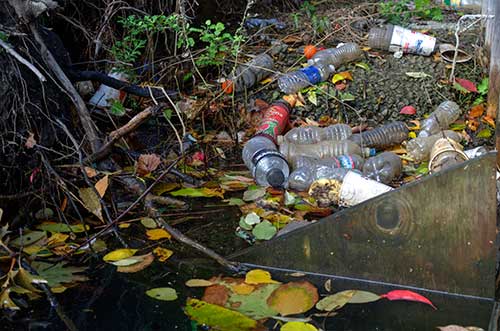Stormwater Management
What is Stormwater?

Stormwater is generated when rain hits a hard surface and begins to trickle across the surface. Along the way it picks up fertilizer from lawns and landscaping, animal droppings, automotive fluids, litter, de-icing sand and chemicals, and dumps its polluted load into a drain or directly into a river or pond. Stormwater also includes melting snow which can carry grains of soil, leaves, litter, and oil into a drain or ditch.
Stormwater runoff often increases flow downstream, starting with the wash from roof drains flowing onto driveways or gallons of water flowing into sewers from paved parking lots. This flow can exacerbate a flood by pouring more water into a swollen river or stream. Because of its load of sand and trash, stormwater can clog grates and pipes, increasing the extent of flooding. Climate change impacts, such as intense storms causing inland flooding and sea level rise, further strain our current stormwater infrastructure.
The result of stormwater runoff is water that is unsafe for human use or for the aquatic ecosystem. The Environmental Protection Agency (EPA) and Rhode Island Department of Environmental Management (RI DEM) have worked for decades to address stormwater pollution, the leading cause of water quality impairments in the state.
Green infrastructure practices used throughout Rhode Island — in the form of residential rain gardens, neighborhood green spaces, and parking lot buffers — absorb and filter significant amounts of stormwater and help lessen the strain on our current aging infrastructure.
Community Response
Rhode Island municipal planners, environmental organizations, and citizens are working together for the coordinated reduction of stormwater. In joint efforts around Rhode Island, street landscapes, gardens, swales and revitalized abandoned lots are being changed into green spaces and the resulting cityscapes and landscapes are becoming more attractive to business, tourism, and residents while improving water quality in nearby rivers, ponds, and bays. Public health, quality of life, and environmental benefits accrue from green infrastructure policy and practice.
